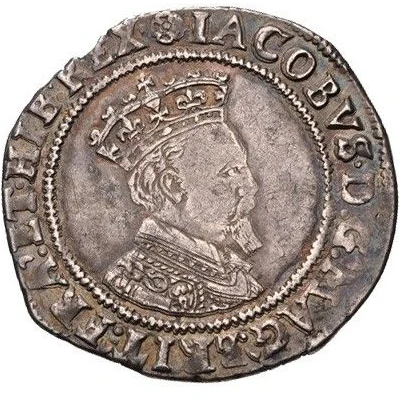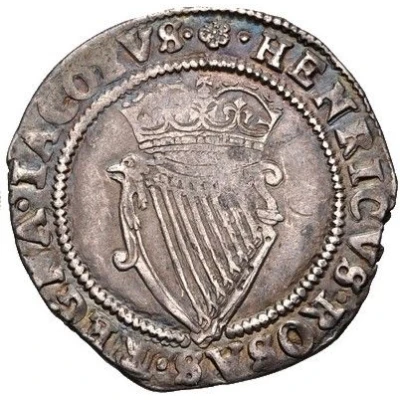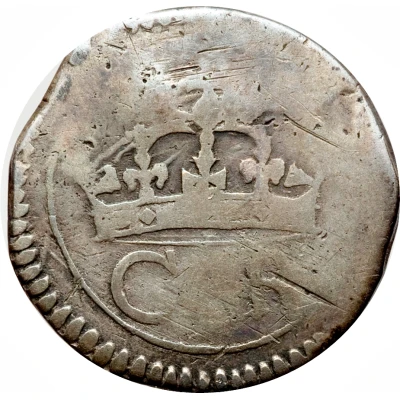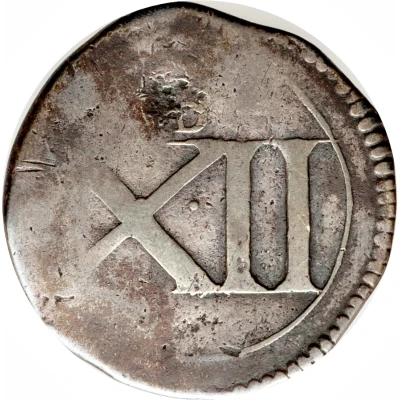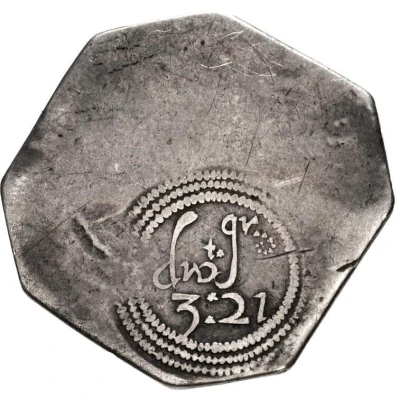
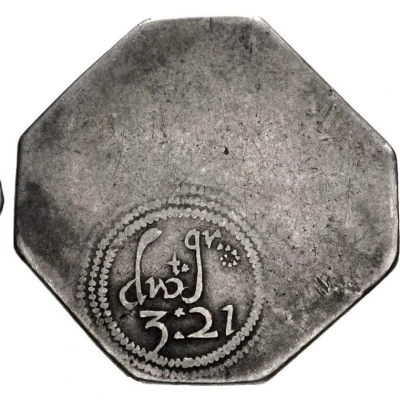

© Classical Numismatic Group, Inc.
1 Shilling "Inchiquin Money" - Siege of Dublin ND
1642 year| Silver | 5.52 g | 30 mm |
| Issuer | Ireland |
|---|---|
| Period | Lords Justices (Great Rebellion) (1642) |
| Type | Standard circulation coin |
| Year | 1642 |
| Value | 1 Shilling (1⁄20) |
| Currency | Second Irish Pound (1460-1826) |
| Composition | Silver |
| Weight | 5.52 g |
| Diameter | 30 mm |
| Shape | Octagonal (8-sided, Irregular) |
| Technique | Hammered |
| Orientation | Coin alignment ↑↓ |
| Demonetized | Yes |
| Updated | 2024-10-05 |
| Numista | N#147056 |
|---|---|
| Rarity index | 97% |
Reverse
Weight in two parts left-to-right within three concentric reeded circles
Script: Latin (cursive)
Lettering:
dwt* gr....
3 ⁑ 21
Unabridged legend: 3 pennyweight, 21 grains
Comment
3 pennyweight = 4.67 grams and 21 grains = 1.36 grams, so this coin was specified at a weight of 6.03 g.The Lord Justices authorised this coinage in 1642 but never made it legal tender.
There were three 1642 issues:
Issue 1 - 'Inchiquin Money' with the coin's weight in dwt and gr (pennyweights and grains) on each side. Issued in six denominations. Crown down to Groat.
Issue 2 - 'Annulet Money' with the coin's weight in dwt and gr (pennyweights and grains) on one side and the value in pence represented by a number of annulets on the other side. Issued in 4 denominations : 9d, 6d, 4d and 3d.
Issue 3 - 'Dublin Money' with the coin's value in shillings and pence on each side. Only Crown (Vs) and Half Crown (IIsVId) issued.
All three issues are also collectively known as 'Inchiquin Money' which does cause confusion with the first issue. It was originally believe that these coins were issued by Lord Inchiquin, but their issue by the Lord Justices in 1642 is now well established.
Note that this coin was struck on each side from the same punch - therefore the coin was made in two strikings not just one. What is not clear from the illustration (unless you have very good mental 3d rotation ability) that the punch on each side is opposite the flat part of the other side. This is not true of all these pieces and when the punches are opposite each other it tends to result in some flattening of part of the design.
Interesting fact
One interesting fact about the 1 Shilling "Inchiquin Money" coin from Ireland is that it was minted during the Siege of Dublin in 1642, which was a time of great turmoil and conflict in Irish history. The coin was named after the Inchiquin family, who were prominent landowners in the area and were known for their support of the Irish Confederate Catholics during the Wars of the Three Kingdoms. Despite its historical significance, the coin is relatively rare and highly sought after by collectors today.
